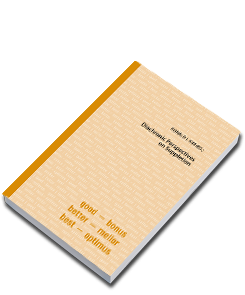Diachronic Perspectives on Suppletion
Studien zur historisch-vergleichenden Sprachwissenschaft 13 (SHVS 13)
2019 · Hardcover · 288 Seiten
ISBN 978-3-935536-81-3
Suppletion has been the topic of numerous articles and monographs in recent years, as interest in this phenomenon has grown among specialists in a wide spectrum of synchronically oriented linguistic disciplines, from typology to morphological theory to acquisition. It has become increasingly clear that an understanding of the history of suppleting paradigms is indispensable to the synchronic formulation of typological or morphological claims about suppletion, and morphological irregularity in general.
The present volume aims to supplement the synchronic approach to suppletion with a diachronic perspective. It treats problems in the analysis, reconstruction, and evolution of suppletive morphology in a range of ancient and modern Indo-European and Afroasiatic languages. Some contributions are more traditional in orientation, e.g. arguing for the crucial importance of etymology in the diachronic study of suppletion, while others grapple with contemporary debates on the nature of “strong” vs. “weak” or inflectional vs. derivational vs. stem suppletion, and still others raise questions of phonology, syntax, semantics, and language contact. Several contributions deal with the synchrony and diachrony of suppletion in individual ancient and modern Indo-European languages, often with interesting implications for Indo-European and for linguistic typology in general. Topics include: the formation of perfect passive participles in Latin; the double-copula systems of Celtic, Romance, and Basque; the prehistory of heteroclitic nominal stems in Proto-Indo-European; suppletion in Afroasiatic, older Indo-Iranian, Tocharian, Romance, and the Modern East Iranian language Yaghnōbī; the Gothic synthetic and periphrastic passives in competition; and minimal word constraints and suppletive imperatives in Arabic.
The book will be of interest to all those working on Indo-European or Afroasiatic languages, as well as scholars of language change in general, linguistic typology, morphological theory, and language acquisition.




